
© Olivier Houeix. (Click image for larger version)
Malandain Ballet Biarritz
La Belle et la Bête
★★★✰✰
Minneapolis, Northrop Auditorium
25 March 2017
malandainballet.com
www.northrop.umn.edu
Emma Watson v. animation. Many Disney fans remain roiled up – or pumped up – about the new live-action remake of Beauty and the Beast. Now Into the fairy tale fray waltzes Malandain Ballet Biarritz, currently touring the United States with La Belle et la Bête.
A few American presenters have attempted to trade on box office coincidence as they’ve marketed the French company, translating the title into English and even feeling obligated to warn patrons that choreographer Thierry Malandain’s interpretation is “darker than the Disney version many are familiar with today.”
Thankfully, Northrop Auditorium, the University of Minnesota’s performing arts center, made no attempt to compare the misadventures of Gaston and Le Fou with the allegorical tale rendered so beautifully onstage by Malandain, the artistic director of Ballet Barritz.
La Belle et La Bête premiered in France last September 2016 – an earlier 2015 version is now considered a work-in-progress. The 25 March performance came midway through a seven-city North American tour. Like Magifique, Maladain’s last big hit, the ballet is performed to a Tchaikovsky mashup, including the first and final movements of the composer’s “Pathétique” symphony. Over-the-top melancholic music sets the stage for a beast as moody as he is depicted in the films, though the French choreographer cites Cocteau’s 1946 version as his inspiration, not Disney.
What’s both puzzling and engrossing about Malandain’s La Belle et La Bête is the inclusion of an allegorical trio in black performing alongside the costumed principal characters. When the performance opens, they’re peeking out from behind the curtains and engaged in a pas de trois worthy of a romantic comedy plot. Both men appear smitten with the exquisitely nimble Patricia Velazquez, and while she plants poignant kisses on Arnaud Mahouy, the hunkier Daniel Viscayo seems more her type.
The trio reappears frequently through the 80-minute performance, and what exactly they symbolize is a little unclear. Until I had an epiphany at the show’s very end, futile attempts to figure out what was up with this threesome sometimes made it tough to focus on the storyline.

© Olivier Houeix. (Click image for larger version)
Actually, even figuring out who’s who in the fairy tale is tricky. The dancers who turn out to be Belle’s sisters appear onstage with father-figure Frederik Deberdt before the heroine does. Like Cinderella’s step siblings, these girls are trouble, and their thrusting gestures, presumably intended to indicate greed, looked like they were random women propositioning Deberdt for… something else. Add a beautiful courtly dance for the corps dancers and this story ballet has quite a preamble.
The titular characters are worth waiting for, however, as danced by the statuesque Claire Lonchampt and her beastly captor Raphaël Canet. The only physical evidence of disfigurement here is the black mesh mask pulled over Canet’s face; all the rest is up to Thierry’s choreography and the audience’s imagination. It helps a bit that Canet’s the only man onstage not wearing pants, and as he writhes with his back to the audience, every sinew and muscle of his legs tremble like the hindquarters of a wolf gnawing its prey.
While he’s convincingly earthy, Lonchampt is appropriately ethereal. She’s tall, lithe and appears to be the only Paris Opera-trained member of the company. There are certainly balances that Lonchampt hits – like when Belle reaches for her ailing father in arabesque – that would be more gorgeous and perhaps more emotionally wrenching if she were dancing on pointe. Yet, when she expresses anger, she does it in a wide plié, almost contracting Martha Graham style. These are the pitfalls and pleasures of watching works by a choreographer like Thierry, who employs such a large percentage of classical steps in his barefoot ballets.
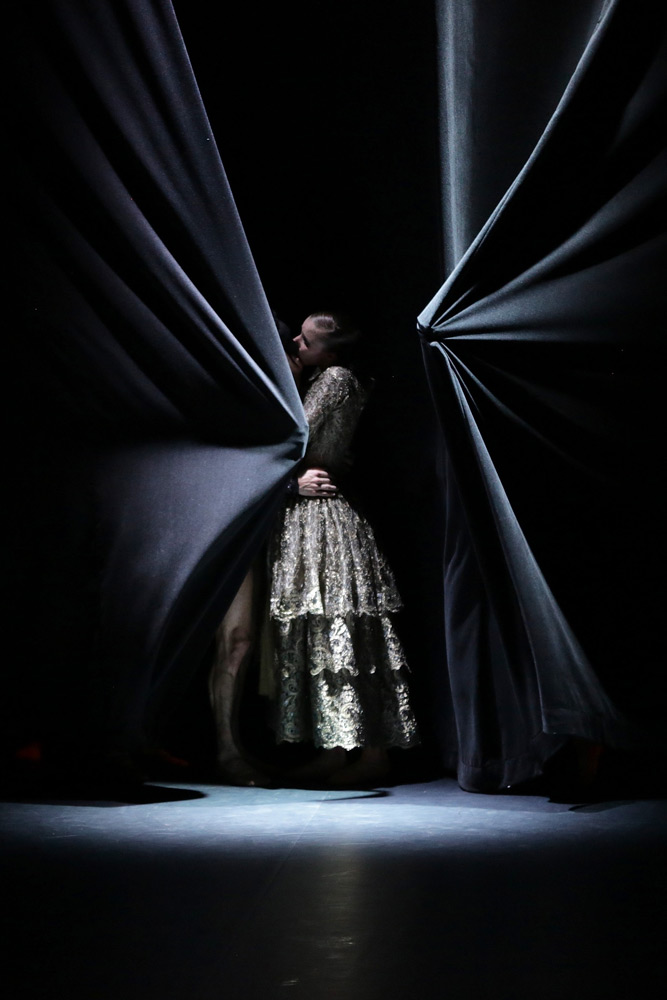
© Olivier Houeix. (Click image for larger version)
Another of his tell-tale tricks is cleverly playing around with sets. In Magifique, dancers alternately hide behind and preen before giant onstage mirrors that can be wheeled around, rotated and folded over to become props. In La Belle et La Bête, the easy-to-pack trick that’s up Thierry’s sleeve are multiple curtains that can be drawn across the stage, creating layers of action, segues between scenes and even convenient hiding places for the characters.
Most often, it’s Mahouy who ends up drawing the black drapes across their slightly squeaky tracks. He’s almost like a silent narrator who absorbs all the stress of both the heroine and her beleaguered suitor. Choreography for Mahouy, Velazquez and Viscayo fill in gaps when a particular passage of romantically swelling strings or percussive bombast from the Tchaikovsky soundtrack don’t suit the flow of Thierry’s narrative.
The “Pathétique” is famously brooding and mercurial, and musicologists still wrangle over whether the composer knew he was dying as he wrote it; the finale is certainly not a happy coda, or even a bittersweet swan song. So, as the plot of “La Belle et La Bête wound down – village beauty locking lips with her masked prince – the suspense lay in wondering how Thierry would sync a happy ending with such somber music.
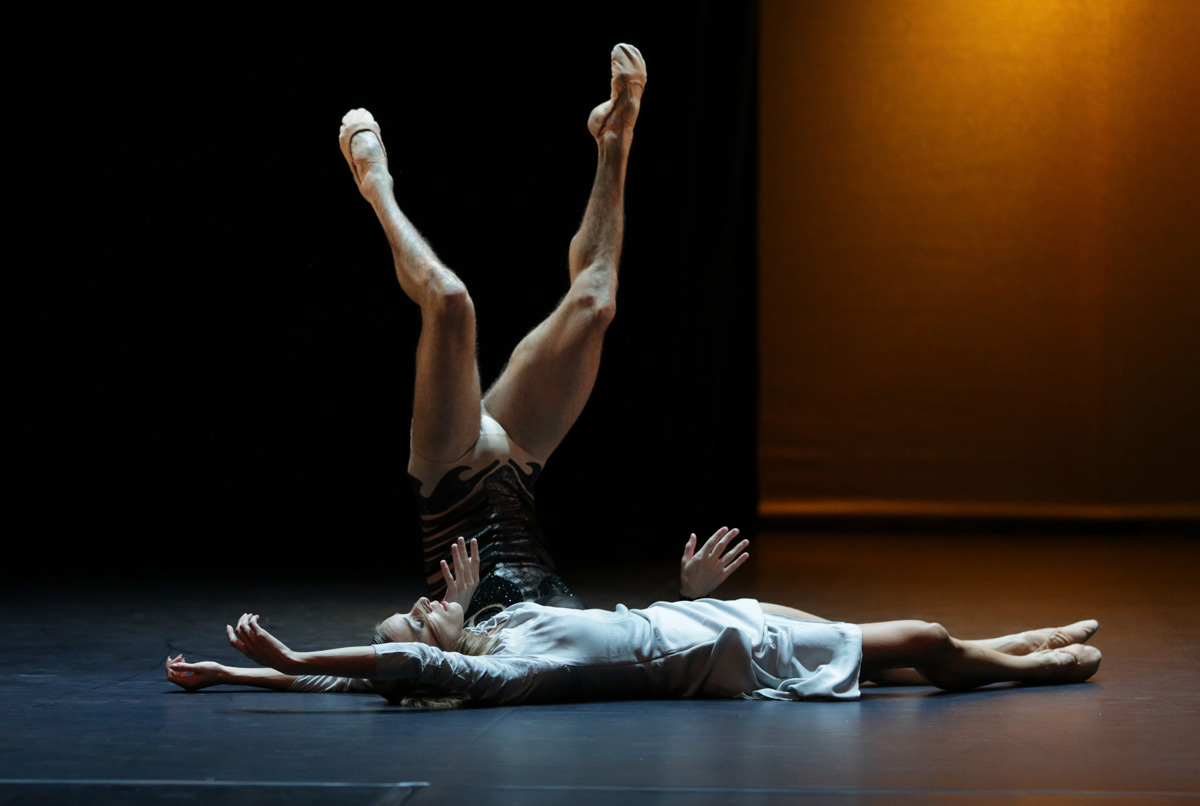
© Olivier Houeix. (Click image for larger version)
One method was to deny viewers a “reveal” – after kissing Lonchampt, Canet simply reappeared from behind a curtain, the company’s tallest woman now dancing with its most strapping man, we simply don’t see her reaction to the transformation. A second was to draw yards and yards of gold lamé across the corps, who return to the stage in a gorgeous parade of brocade to toast the happy couple. After the proscenium curtain falls on a pile of metallic fabric, out peeks Mahouy. He’s a tiny, wiry bald dancer, and engaged in another tortured-looking solo, and as the final strains of Tchaikovsky’s mourning bassoons and basses trail off, he pulls a black mask over his face, and disappears.
“Once upon a time, in a faraway land… “ so begins the foreboding prologue of both Disney films, relating the curse of the prince who will remain a beast unless “he could learn to love another, and earn her love in return.” My theory about Thierry’s allegorical trio is this: In fairy tales love may conquer, subpar looks and all, but in real life, it’s much harder for the guy to get the girl.










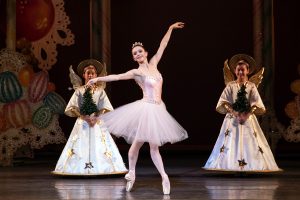

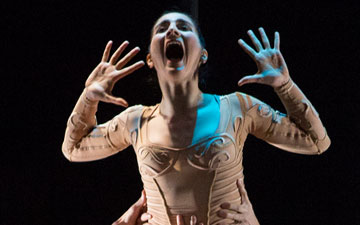
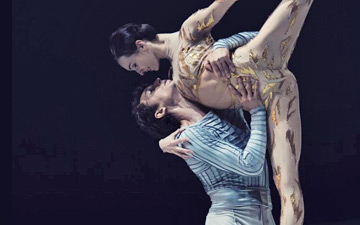

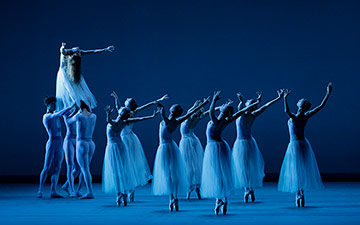
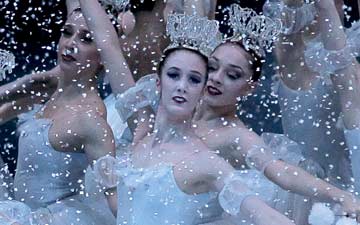
You must be logged in to post a comment.